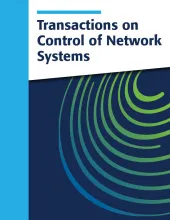Our recent paper on the interaction between autonomous mobility on demand systems and power distribution networks has been accepted for publication by IEEE Transactions on Control of Network Systems and is available here.
Abstract: In future transportation systems, the charging behavior of electric Autonomous Mobility on Demand (AMoD) fleets, i.e., fleets of electric self-driving cars that service on-demand trip requests, will likely challenge power distribution networks (PDNs), causing overloads or voltage drops. In this paper, we show that these challenges can be significantly attenuated if the PDNs’ operational constraints and exogenous loads (e.g., from homes or businesses) are accounted for when operating an electric AMoD fleet. We focus on a system-level perspective, assuming full coordination between the AMoD and the PDN operators. From this single entity perspective, we assess potential coordination benefits. Specifically, we extend previous results on an optimization-based modeling approach for electric AMoD systems to jointly control an electric AMoD fleet and a series of PDNs, and analyze the benefit of coordination under load balancing constraints. For a case study of Orange County, CA, we show that the coordination between the electric AMoD fleet and the PDNs eliminates 99% of the overloads and 50% of the voltage drops that the electric AMoD fleet would cause in an uncoordinated setting. Our results show that coordinating electric AMoD and PDNs can help maintain the reliability of PDNs under added electric AMoD charging load, thus significantly mitigating or deferring the need for PDN capacity upgrades.
